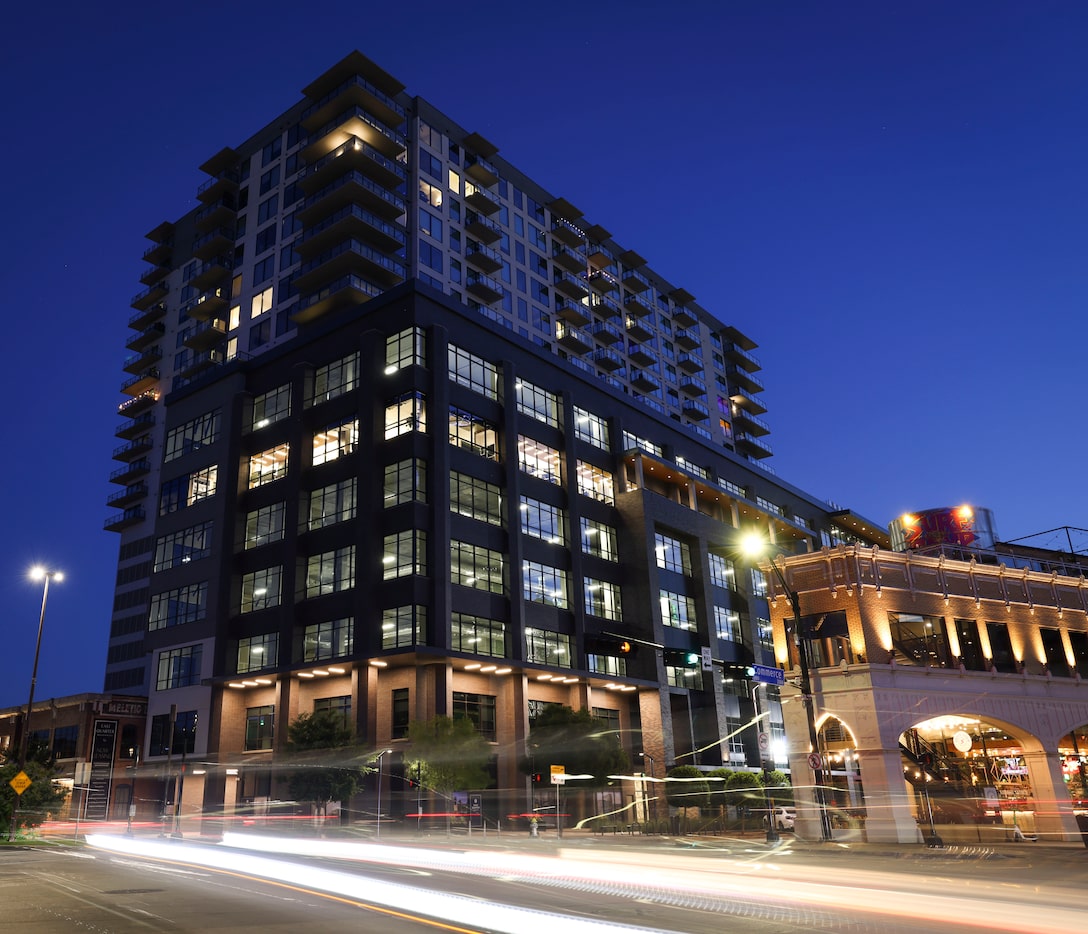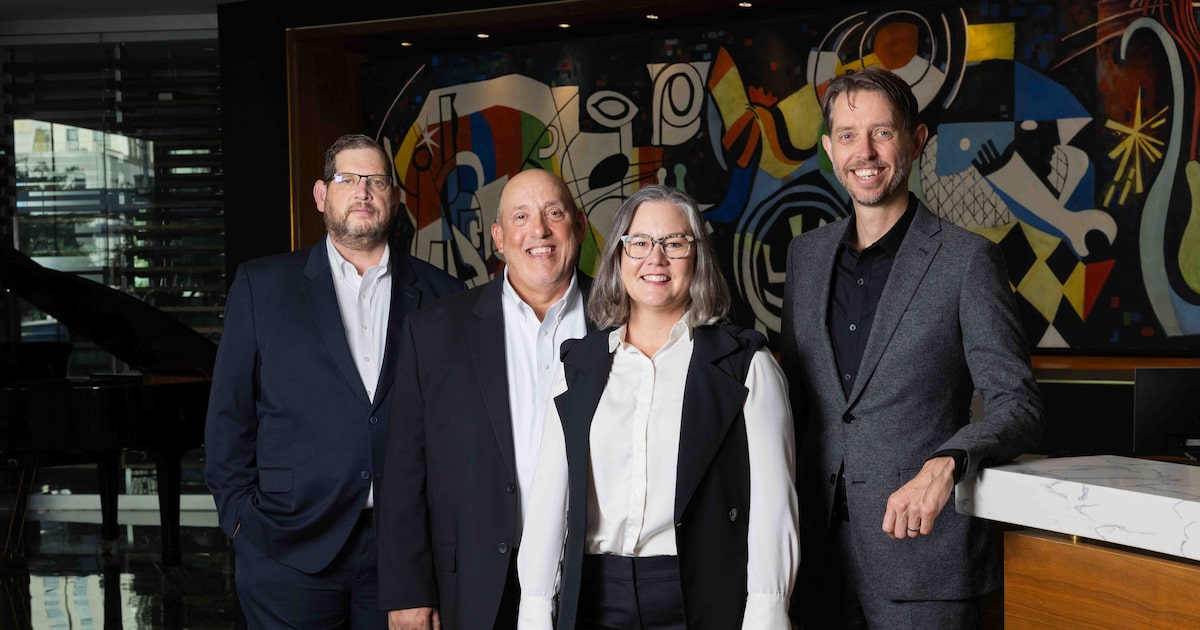Over the last 25 years, Merriman Anderson Architects has been stitching together the fabric of Dallas’ urban core.
Standing at the intersection of Commerce and Ervay and looking east, it’s possible to see at least six buildings the architecture firm helped redevelop downtown, including the Allen building, the Statler Hotel and the old Dallas Library — now home to The Dallas Morning News.
All told, the firm has spent the better part of the last quarter-century converting more than 20 unused and empty buildings downtown into thriving apartments, hotels, offices and schools.
Merriman Anderson’s downtown Dallas historic projects
 View Gallery
View Gallery
D-FW Real Estate News
The Dallas Morning News sat down with MAA principals Milton Anderson, David Masters, Jennifer Picquet-Reyes and John Carruth to talk about what it means to transform a city from the inside out.
They reflect on the past while keeping their eyes toward the future.
Answers have been edited for content and clarity.
What is it about downtown Dallas that made you want to focus your efforts there?
Masters: “Jerry Merriman actually worked for George Dahl early in his career, so I think there was a real passion there. Kind of a little side story: Before we got deep into this, we already had a downtown office. We were doing tenant work for Trammell Crow in the early ’90s. But we were based in Preston Center at the time, and we had just started the Interurban project.
There was this desire to be downtown, to do downtown work, and we realized if you’re going to do downtown work, you need to be downtown. So we decided to put our money where our mouth was and started looking for a building. That was a challenge in itself, because the building we’re in now had several hundred owners, and just trying to put that deal together was a big step. But really, I think it’s as simple as this: Downtown is home. And at that time, downtown needed us.”
MAA has done so many historic renovations. What typically prompts them? Is it the natural life cycle of a city that buildings will become vacant and repurposed?
Picquet-Reyes: “I think it’s the natural life cycle of the city. When we moved into downtown Dallas, there were roughly 30 buildings that were completely vacant. Out of those buildings, we converted 20 or 22, I think. Many of these buildings were Class B or Class C offices. You know they weren’t going to attract new tenants, and so they were completely vacant, some of them for decades. So it’s kind of a natural cycle into something else.”
Were there any properties where it simply wasn’t possible to complete a renovation?
Carruth: “These days, a lot of the buildings we’re looking at aren’t historic. They’re buildings most people would look at and say, ‘You can’t do anything with that.’ And the truth is, we’ve studied a lot of buildings, but not all of them got done, mostly because of financial reasons.”
Picquet-Reyes: “Yeah, we’ve definitely had projects that didn’t go forward, mostly for financial reasons. But we do know about many financial incentives that are available. We’ve worked with the city of Dallas on TIF funding, the North Texas Council of Governments, PACE financing — all kinds of avenues that our previous clients have used. Often, they’ll stack those on top of historic tax credits.
What is downtown becoming now? Because we call it the central business district — and there is business that is happening there — but it’s also becoming something else. When people walk through downtown in 10 or 15 years, what are they going to be experiencing it as?
Carruth: “I think it’s going to be mixed-use and entertainment. What’s happening with the [Kay Bailey] Convention Center is a big shift. That project is going to allow the Cedars to really be enveloped into downtown. And if — or when — the high-speed rail comes, how it connects to our existing light rail system will be a big deal, too.”
Anderson: “There are great places to live now. I’ve got friends who moved from Garland and elsewhere into downtown, partly because of the new schools coming in. There are jobs here, there are corporations here. Now, people can actually live this urban lifestyle that didn’t feel possible before. Everyone used to be heading in the opposite direction. But I think that’s changing, and over the next 10 years, we’ll start seeing new buildings again as well.”
With 25 years in the rearview mirror, what do the next 25 years for Merriman Anderson look like?
Masters: “As far as downtown Dallas, we’ve got a few things cooking right around City Hall, actually, and hopefully over the next few years we’ll see some real movement there. I think we’ll also see more happening south of I-30.
We’ve got an office in Fort Worth, and we’d like to grow it. We just opened an office in Covington, Ky., and there’s a real need up there for the kind of work we’ve been doing here in Dallas.”
Are you planning even more offices across the country?
Masters: “Growth is always important, but it’s just never been what drives us. I can think of so many firms recently, especially in engineering but in architecture too, that have been bought out by companies focused on scaling. And I think sometimes the quality of the work suffers.
Anderson:
We’ve never had to grow too big. I think we’re around 70 people now, maybe a little more. But we’ve always stayed in that 55-70 range. And the reason is simple: The quality of what we do and the timeliness we do it in.”

